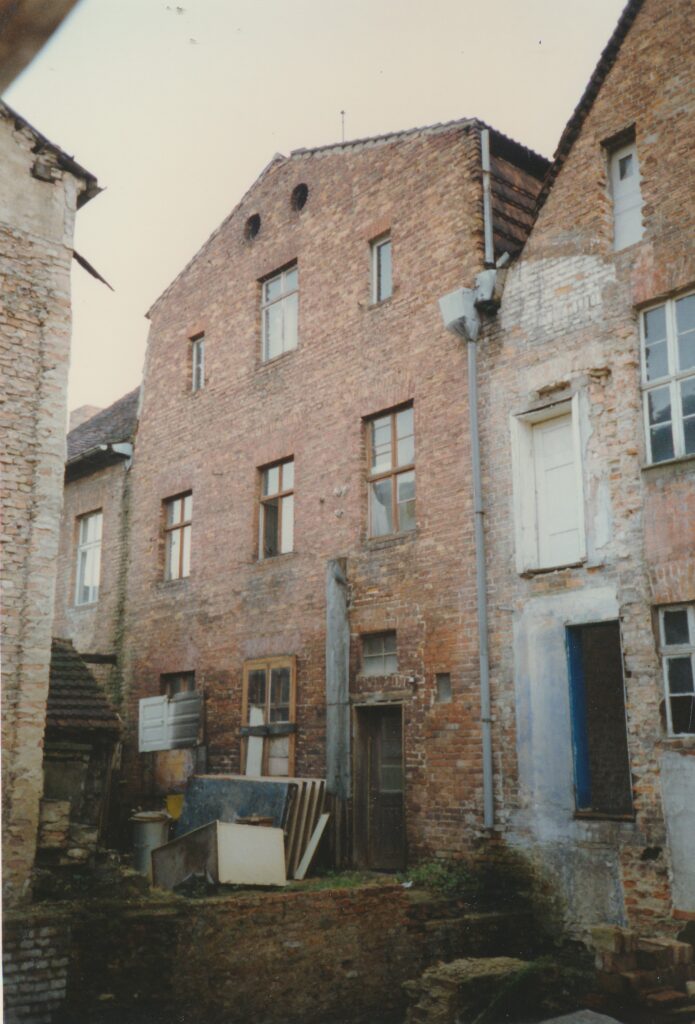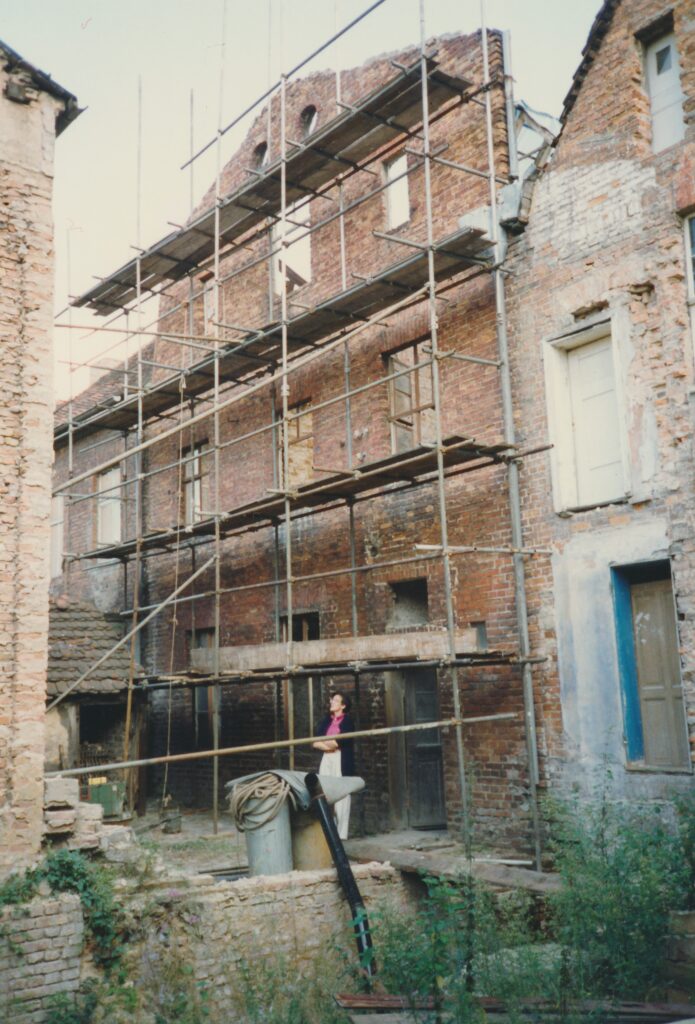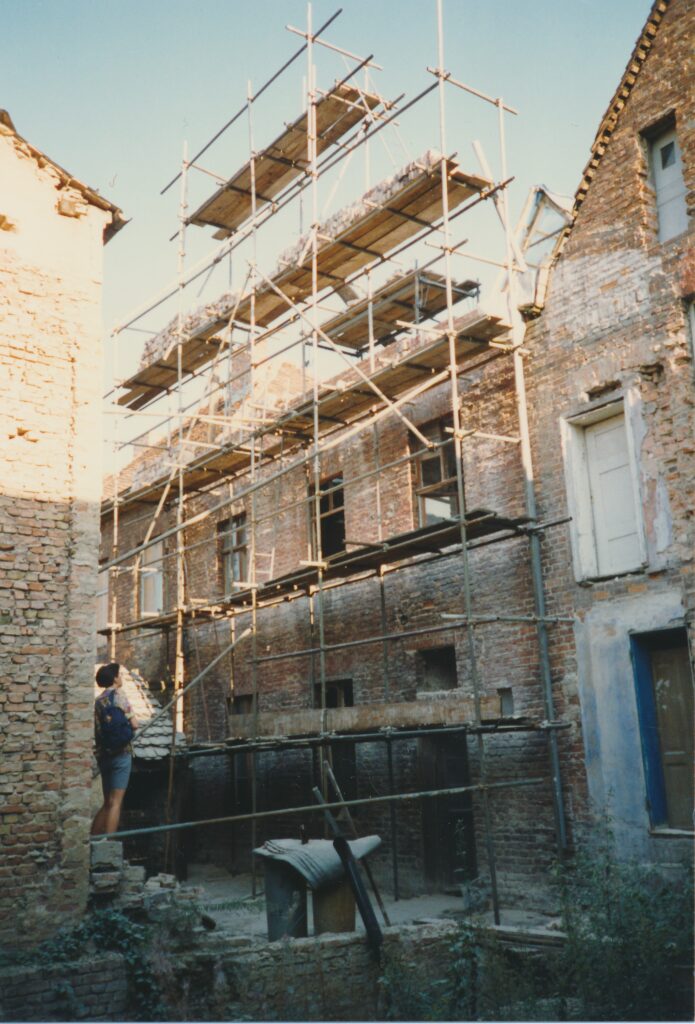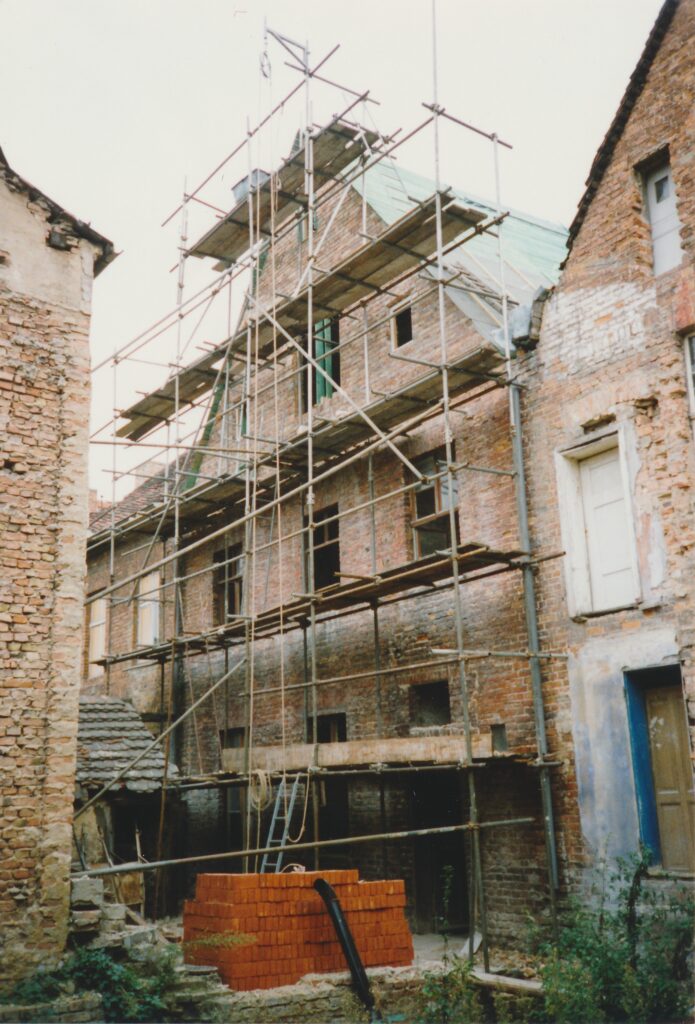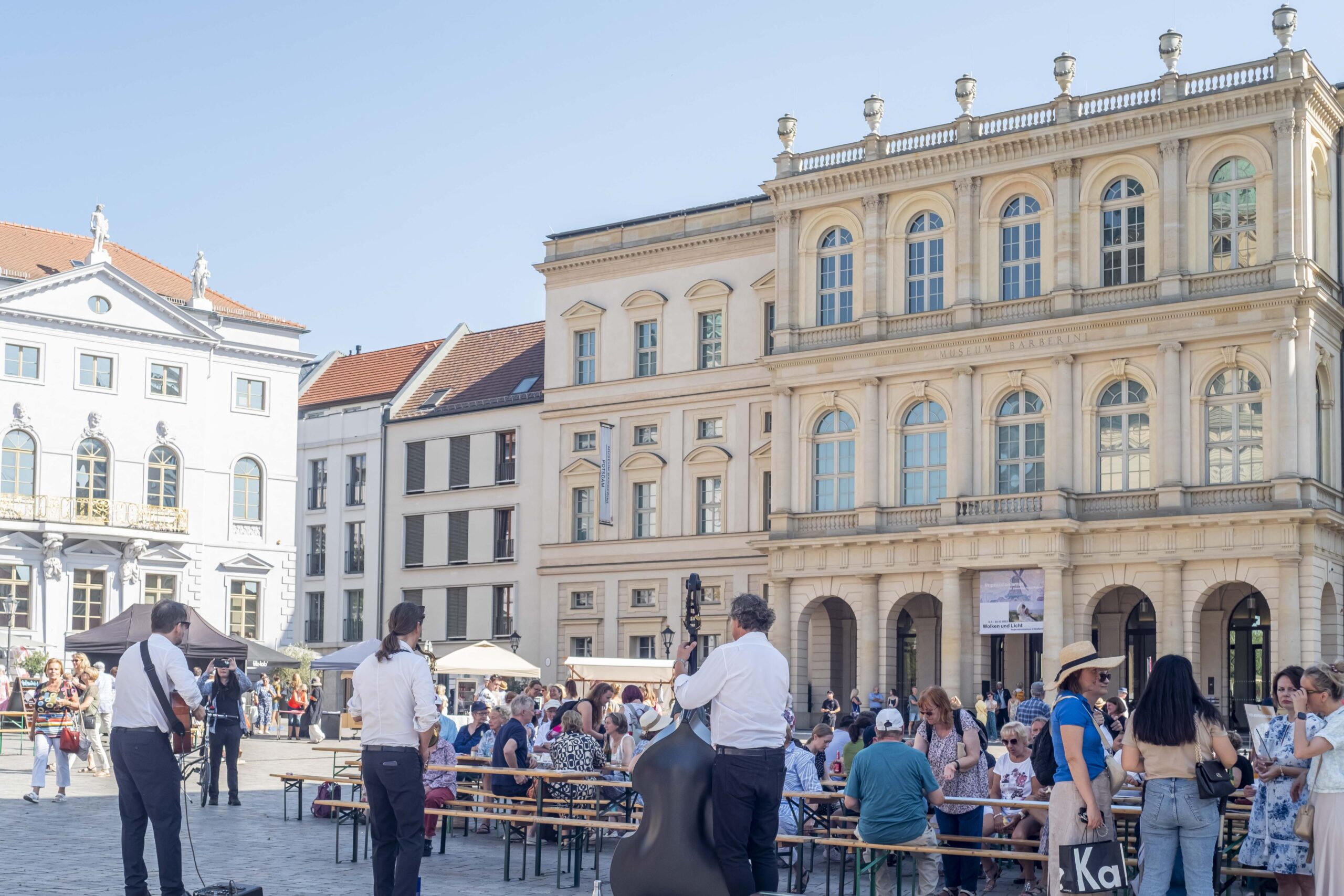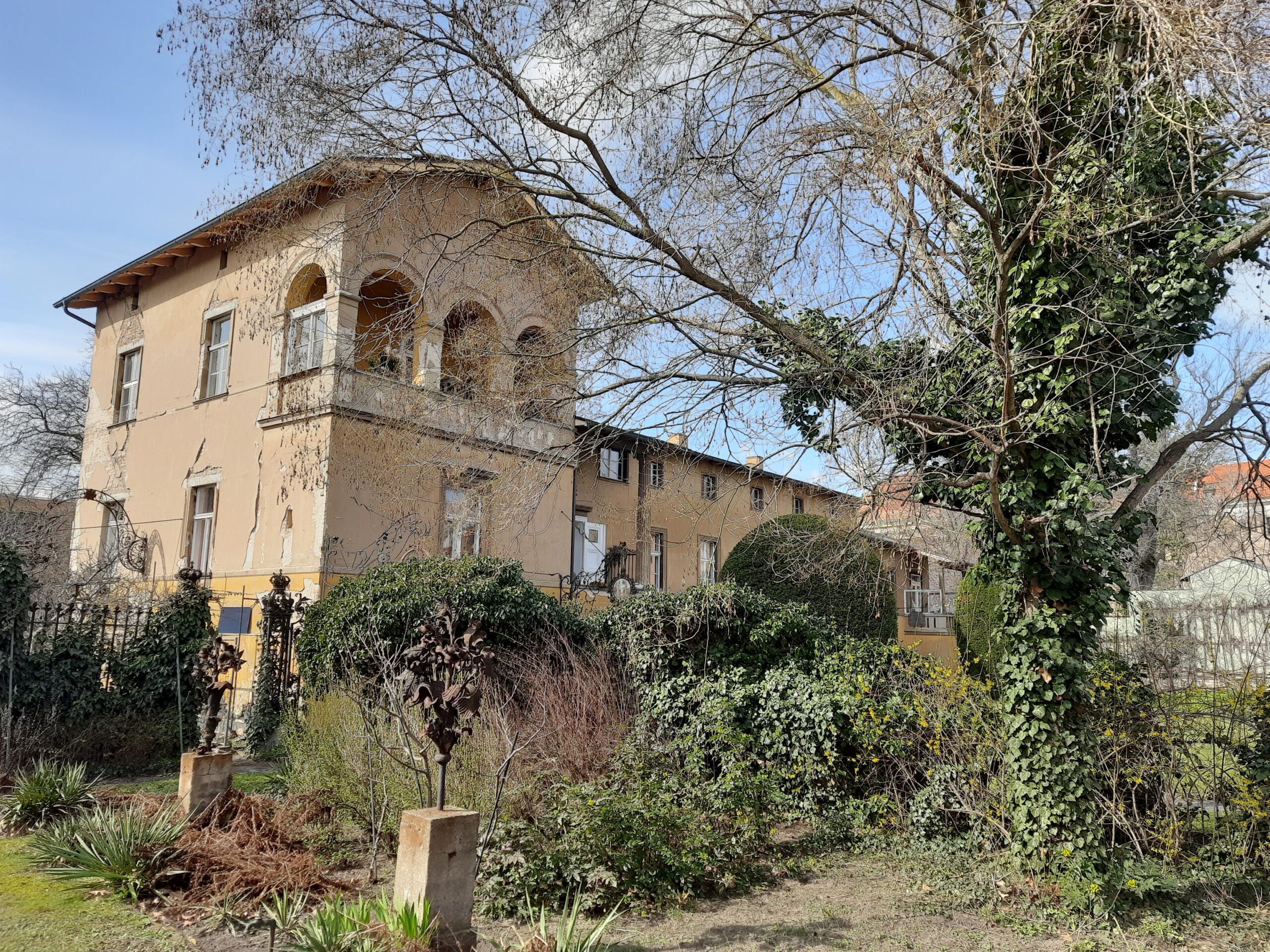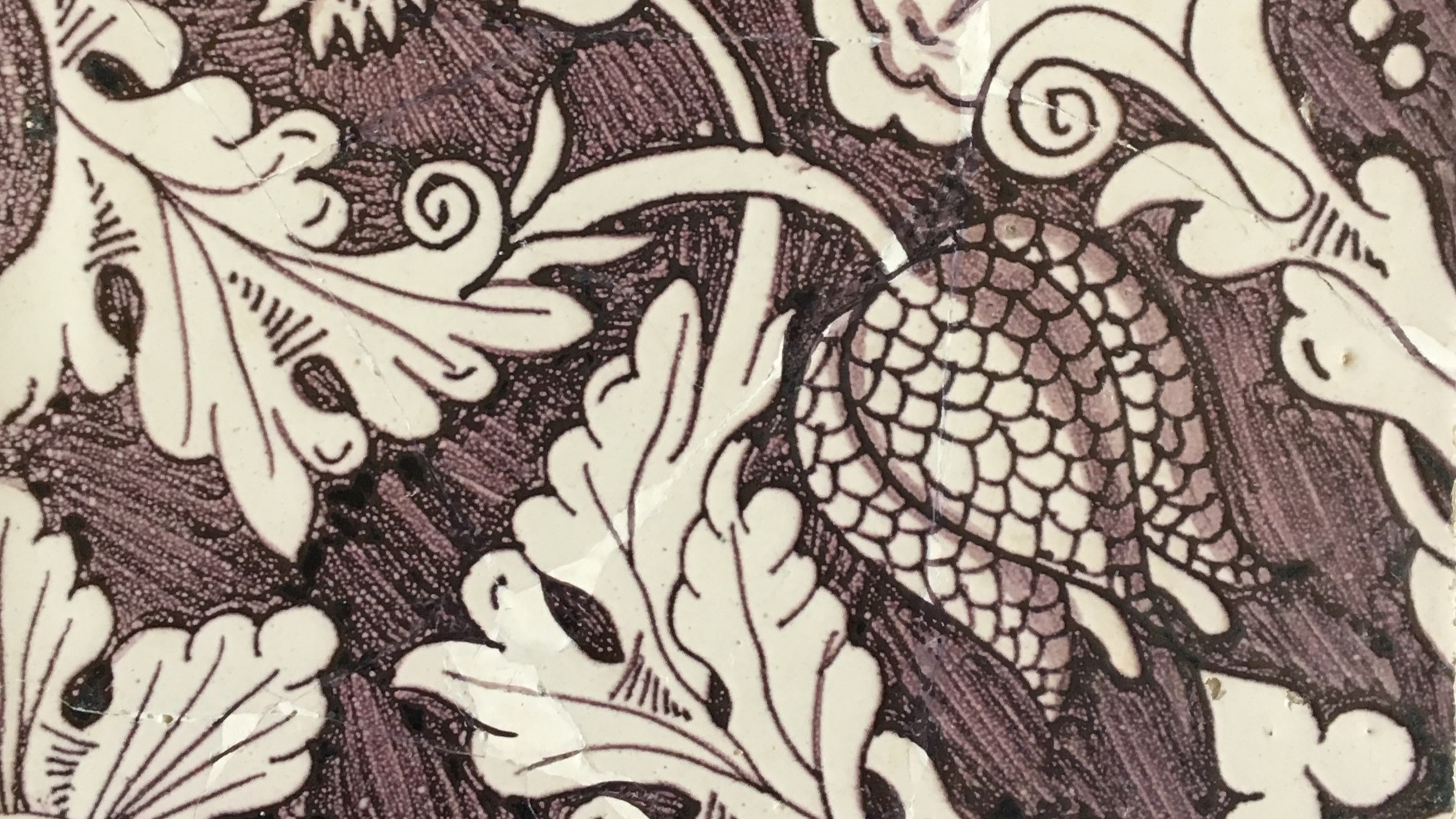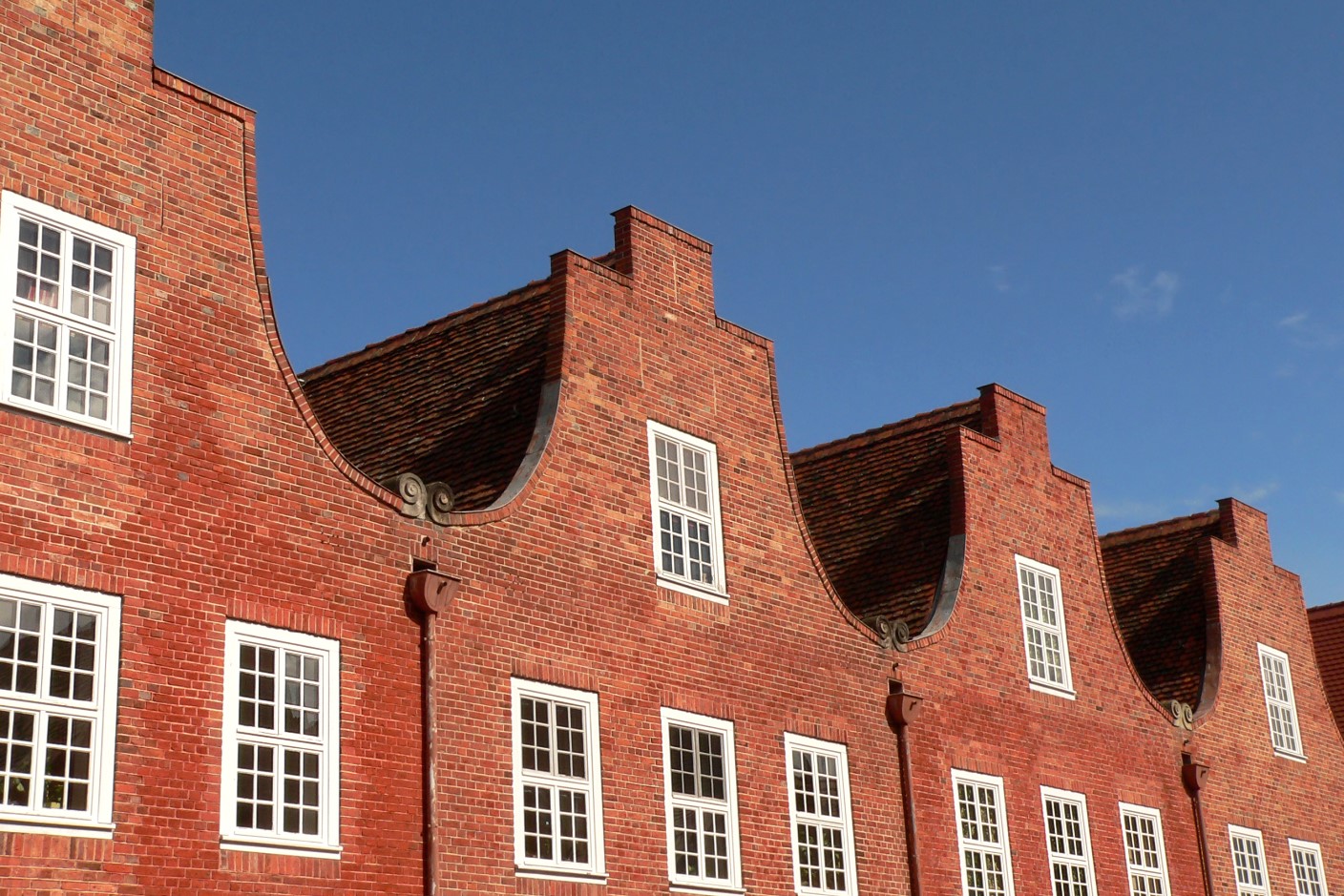
About Lost Doors and “Schnorch”
Renovation in the Dutch Quarter
Back in 1989 we were a young couple in our twenties and were truly overwhelmed by the political changes. Living in Berlin-Wilmersdorf (West), we tried to spend every weekend in that mysterious country called the “GDR” which was, on the one hand, remote and unknown and yet completely surrounded us. We saw the strange coexistence of untouched nature and industrial wastelands, mansions and palaces in their decaying beauty, sometimes with brutal structural changes to their architecture. We learned to stand in an orderly queue in shops (East) and began to prefer it to the disorderly jostling at the meat and cheese counter (West). We met people who didn’t give a damn about what other people thought and others who adapted quite fast to the “new era”. And we learned German vocabulary previously unknown to us, for example: Schnorch.
SCHNORCH?!
Take a house that desperately needs renovation and has been empty for several decades, where the roof is leaking, which is why the floorboards are damaged, where the clay and straw insulation are hanging down from the ceiling, the beams are covered with mold, the sewage pipes have dried up and the remaining furniture is covered in dust and dirt. And then, on an early summer day, when it is already warm outside, carefully open the door of such a house, step down the hallway, which is dark because of the closed shutters, and suck in the cool, no, cold air around you. That’s SCHNORCH – at least that’s what we learned from our neighbors, and they knew all about it. They were real East German pioneers who had – even before the wall came down – been able to buy a house in Potsdam`s Dutch Quarter. In most cases, it was not more than a ruin they acquired, but since they belonged to the species with an affinity for construction, like architects or engineers, they seemed well-equipped for this adventure of redevelopment. We joined them in 1990, even though our knowledge of construction work was rather limited (not more than a fish knows about cycling). But what else could we do? We literally fell in love with the Dutch Quarter when we walked through Mittelstraße for the first time in February 1990 – like the prince who finally made it to Sleeping Beauty. Therefore, almost immediately after returning from this spontaneous excursion, we filed a newspaper advertisement in the “Brandenburgische Neueste Nachrichten” searching for a “House in the Dutch Quarter”. Surprisingly enough, a number of people contacted us and the matter became serious with a married couple of about our age, whose property was the smallest ever (187 square meters). This is how we probably became the first Wessies (people from West Germany) who actually bought a house and hadn’t just inherited property or filed a claim for restitution of old family property.
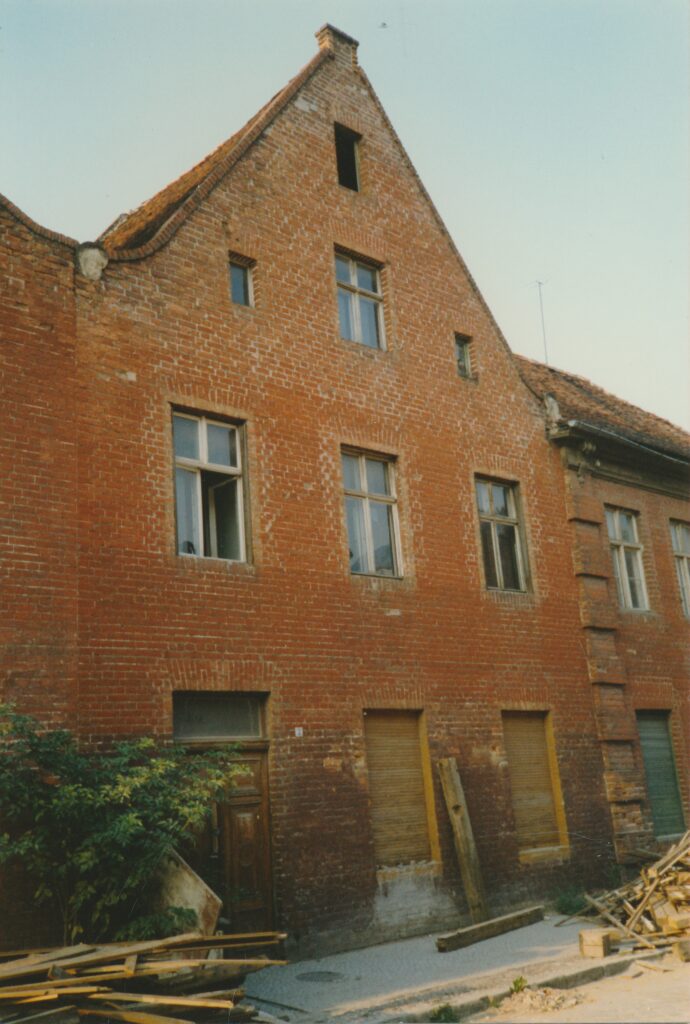
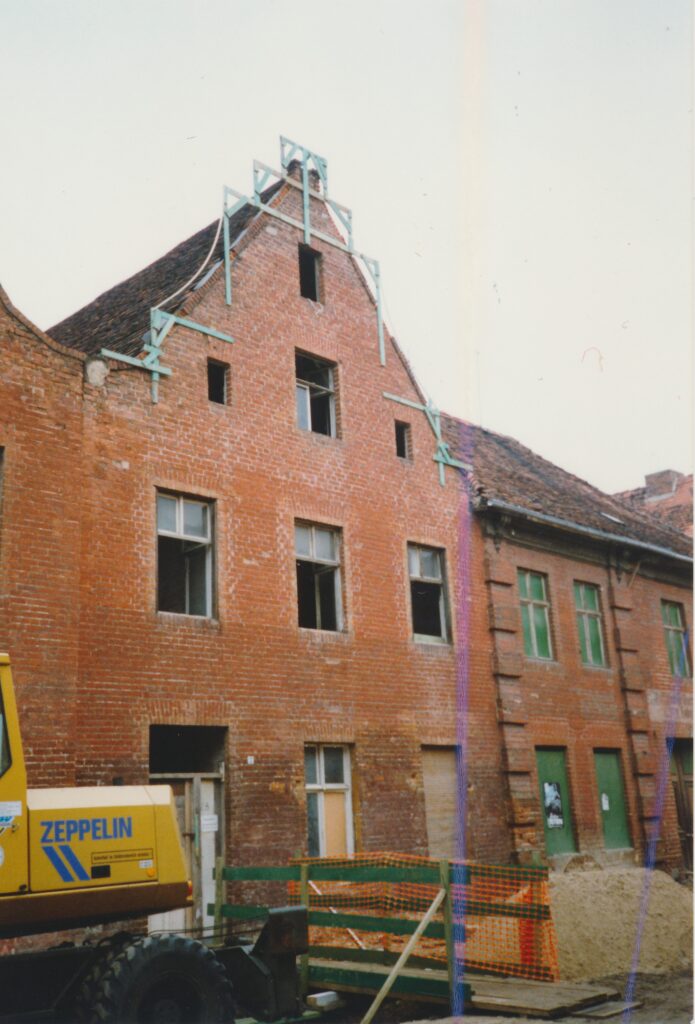
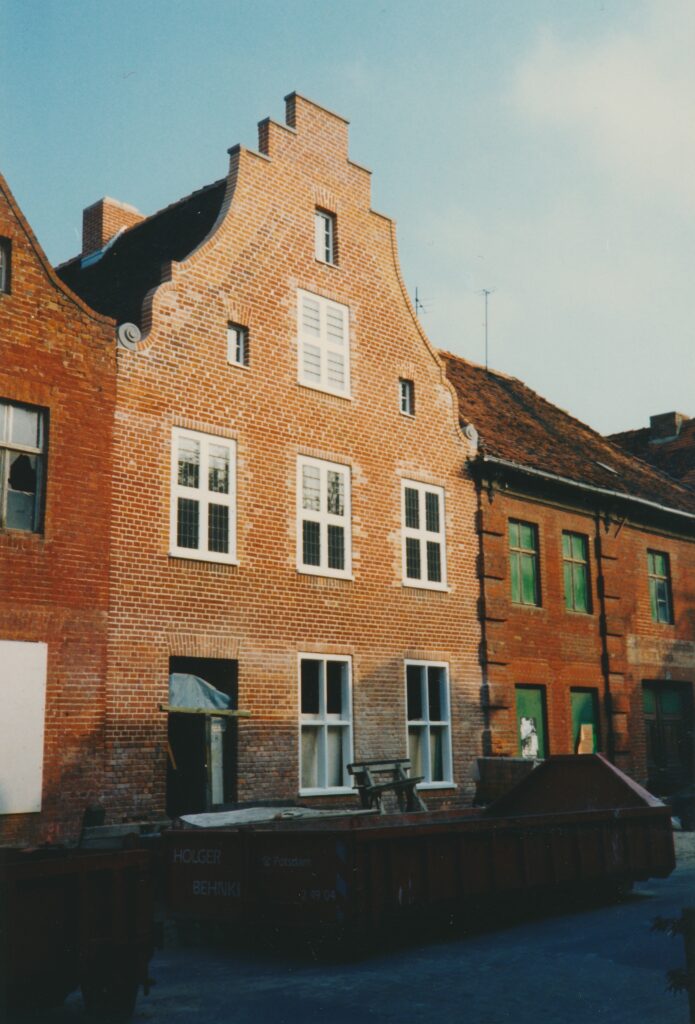
Back to Schnorch – yes, our house smelled like that, too, no wonder, because it had been empty for a while and had everything that makes renovation so difficult: leaks in the roof, as a result of which there was fungus, mildew, rot; beam heads that had rotted away, also woodlice infestation, rotten chimneys, which explained why the entire middle wall of the house was soaked with tar. Windows and doors were partly from the baroque era, partly younger, but all the window handles or doorknobs were missing, because scrap metal thieves had removed them to offer them at a ridiculous price to buyers (people like us)- and this list could go on forever. On top of that, craftsmen in the early nineties were not easy to find: the whole country needed them. Also there were still no cell phones for communication, only very few craftsmen had a landline connection, so that agreements had to be made either verbally or by letter – and as you could not reach them you could only hope that people were actually working at your construction site throughout the week. This was not only so in the private sector but also in the newly founded local authorities in their transition from GDR to western standards: nobody really knew the legal rules to be applied and how to interpret them. That made it difficult on the one hand, but on the other hand it offered precious opportunities for creative handling of the law and unconventional solutions of matters that today would probably drag on forever. To give you an example: on the ground floor of our house there was a remarkable door frame dating back to the 18th century – but the corresponding door was nowhere to be found, at least it was not in the house. But then we learned that someone had found this unusual door in the depot of the monument preservation authority which was situated in the former Potsdam Stasi (GDR state security) prison in Lindenstraße. The door was marked with an “M” painted on it for “Mittelstraße” and our house number, too. So we drove there straight away, explained we’d like our door back – and, in fact, an employee of the authority walked with us through the cell block where only shortly before prisoners had been kept under unbearable conditions. He opened the door to a room where all sorts of objects from the neighborhood were stored – and that’s where we discovered the said door that leads today to our living room. We received it without any inspection of our personal details, ownership status or the like, packed it into the car and off we went.
After more than thirty years we still find it amazing that when passing by an old rotten house and smelling a small pinch of SCHNORCH a whole bouquet of feelings/impressions/anecdotes comes to our memory all at once. But that’s apparently the way olfactory memory works.
– Renate Hellenthal
Header Image: Pediments in the Dutch Quarter, Potsdam │ Photo: Wikimedia Commons, Axel Hindemith

